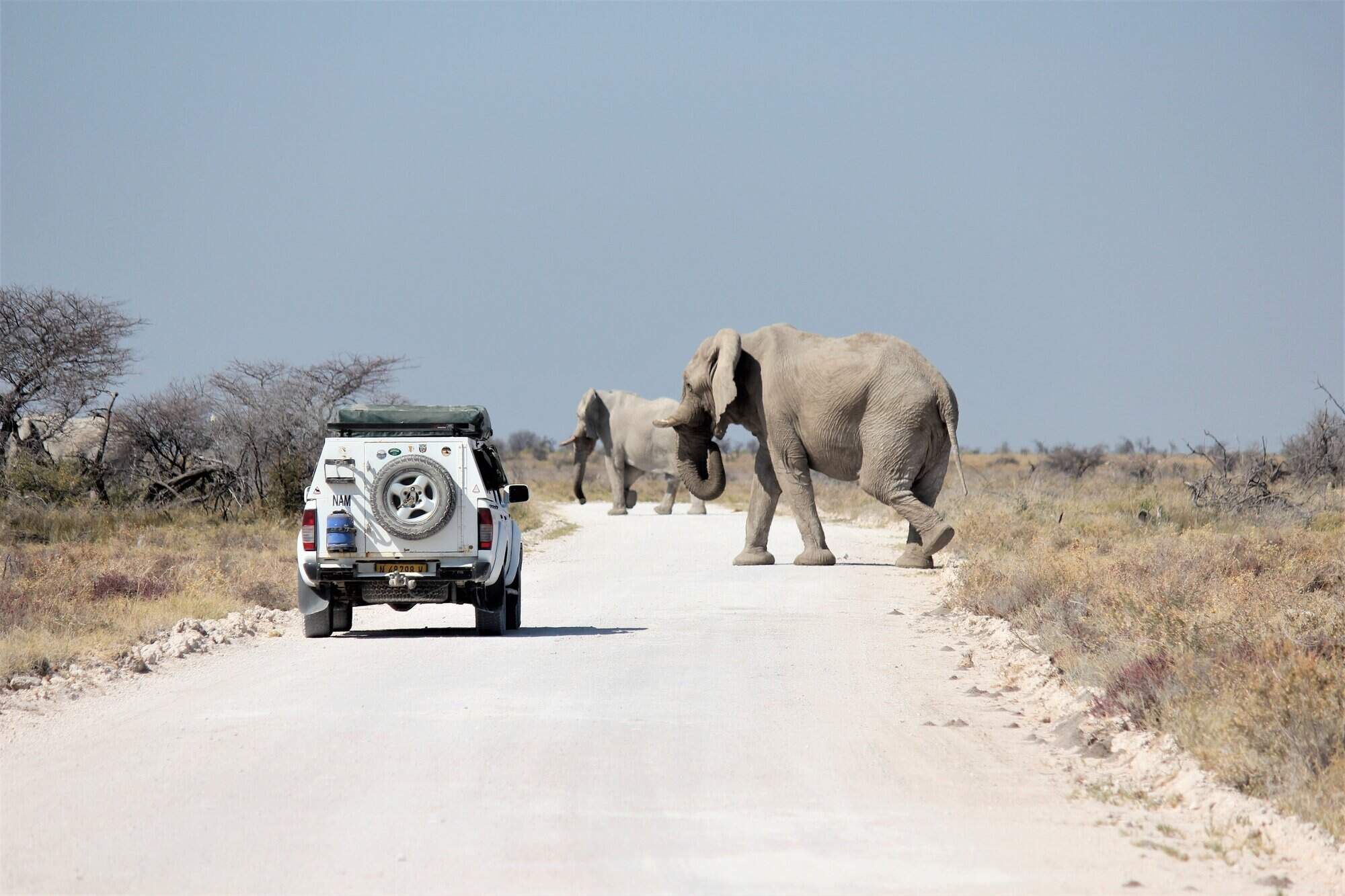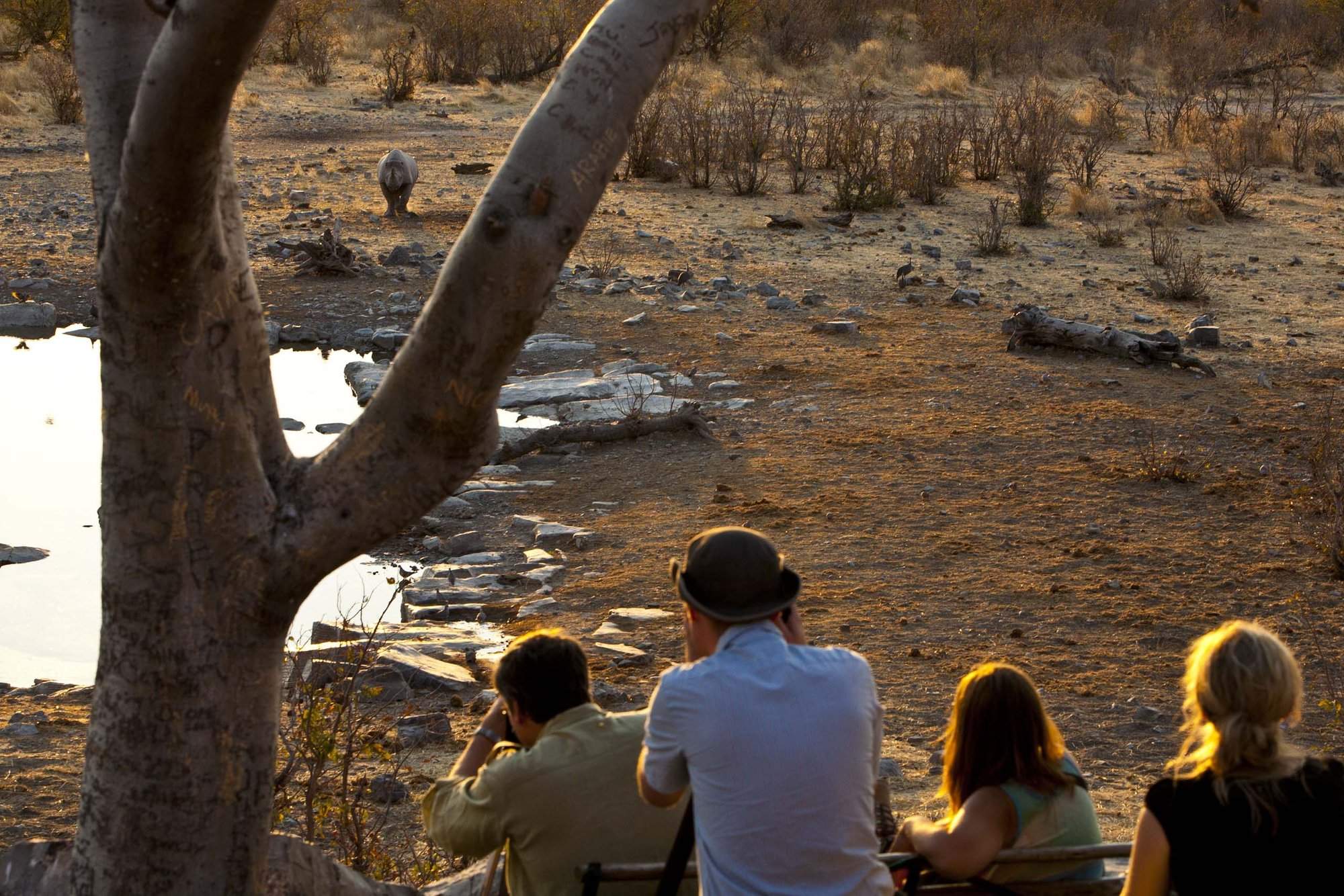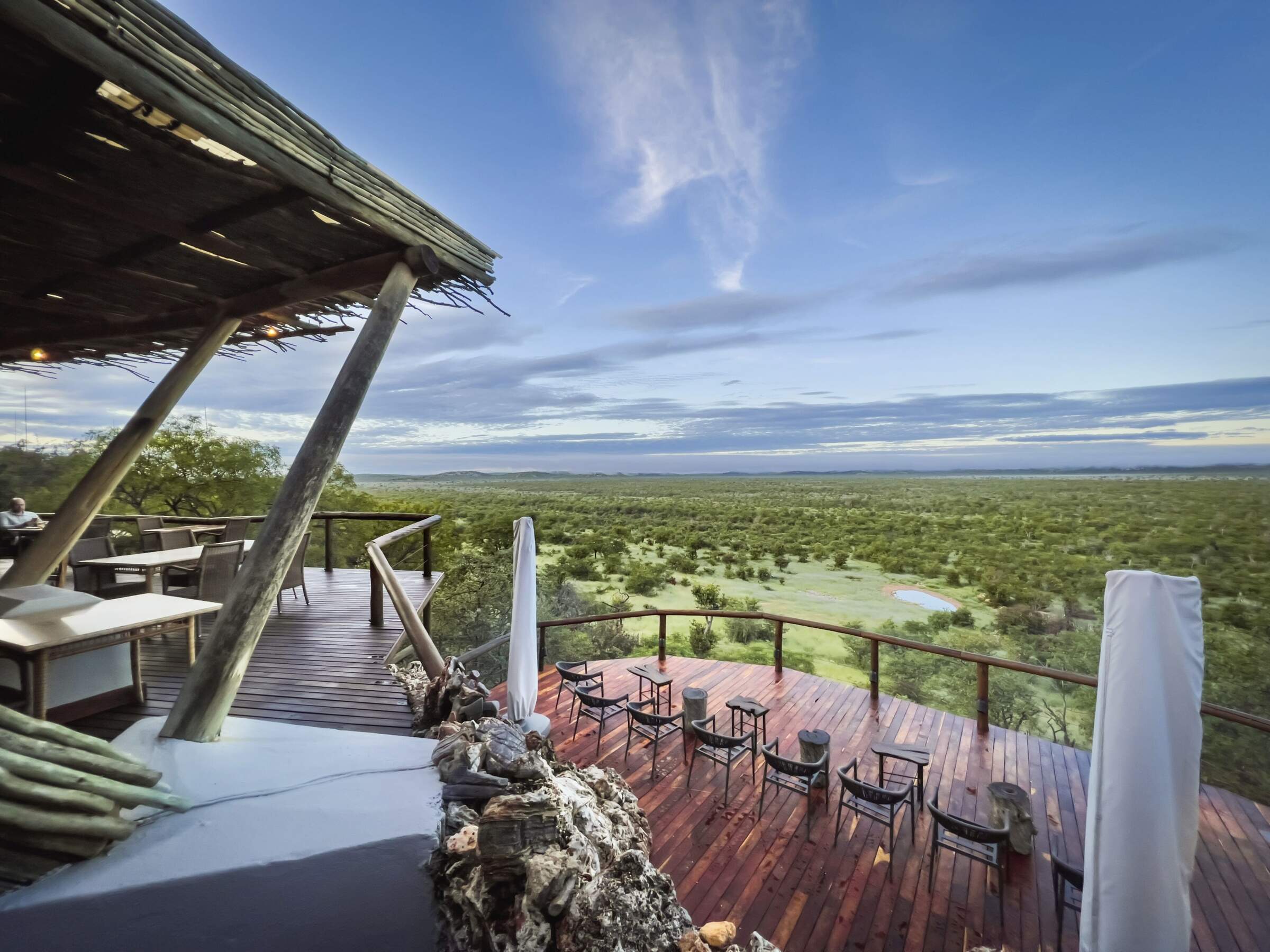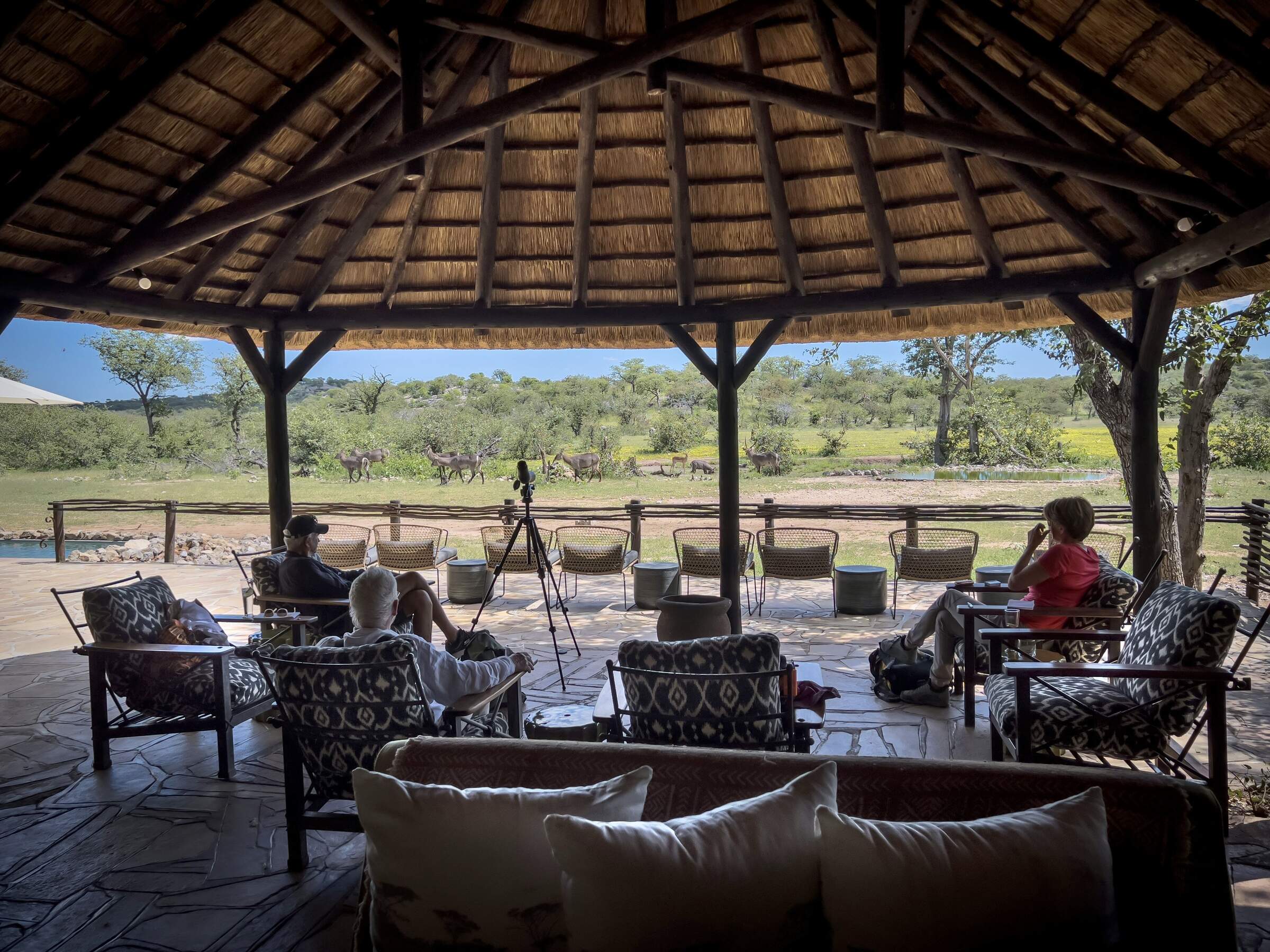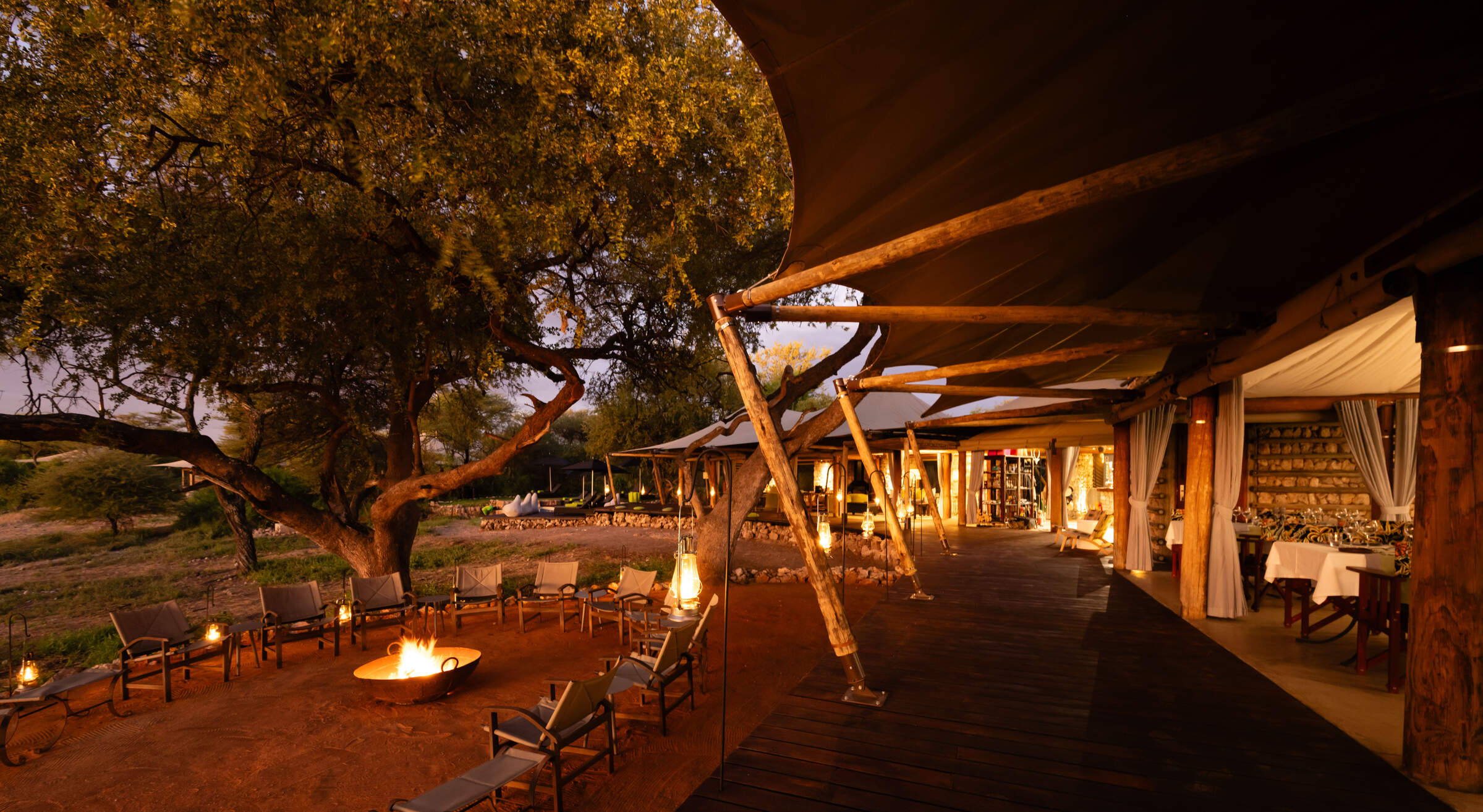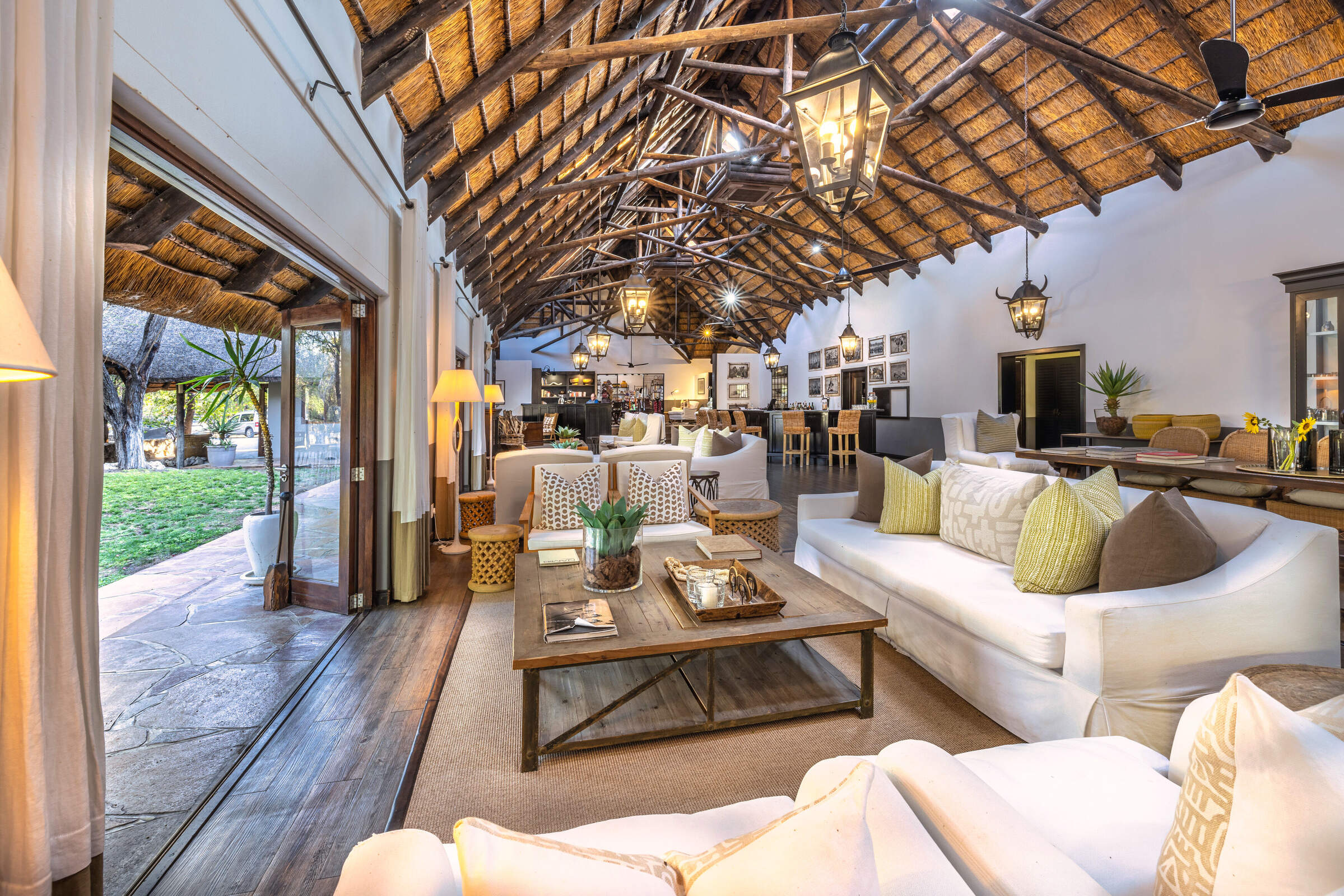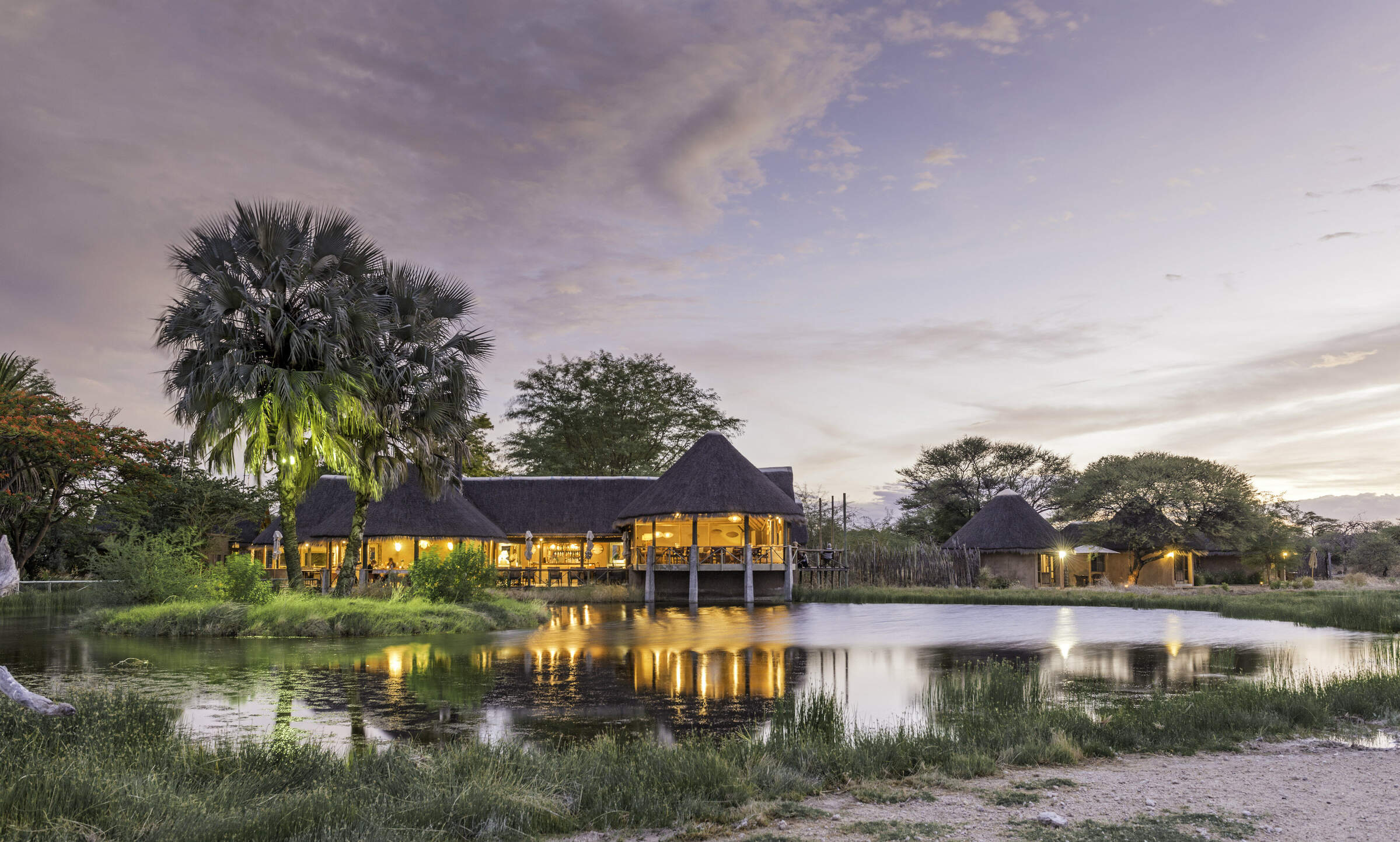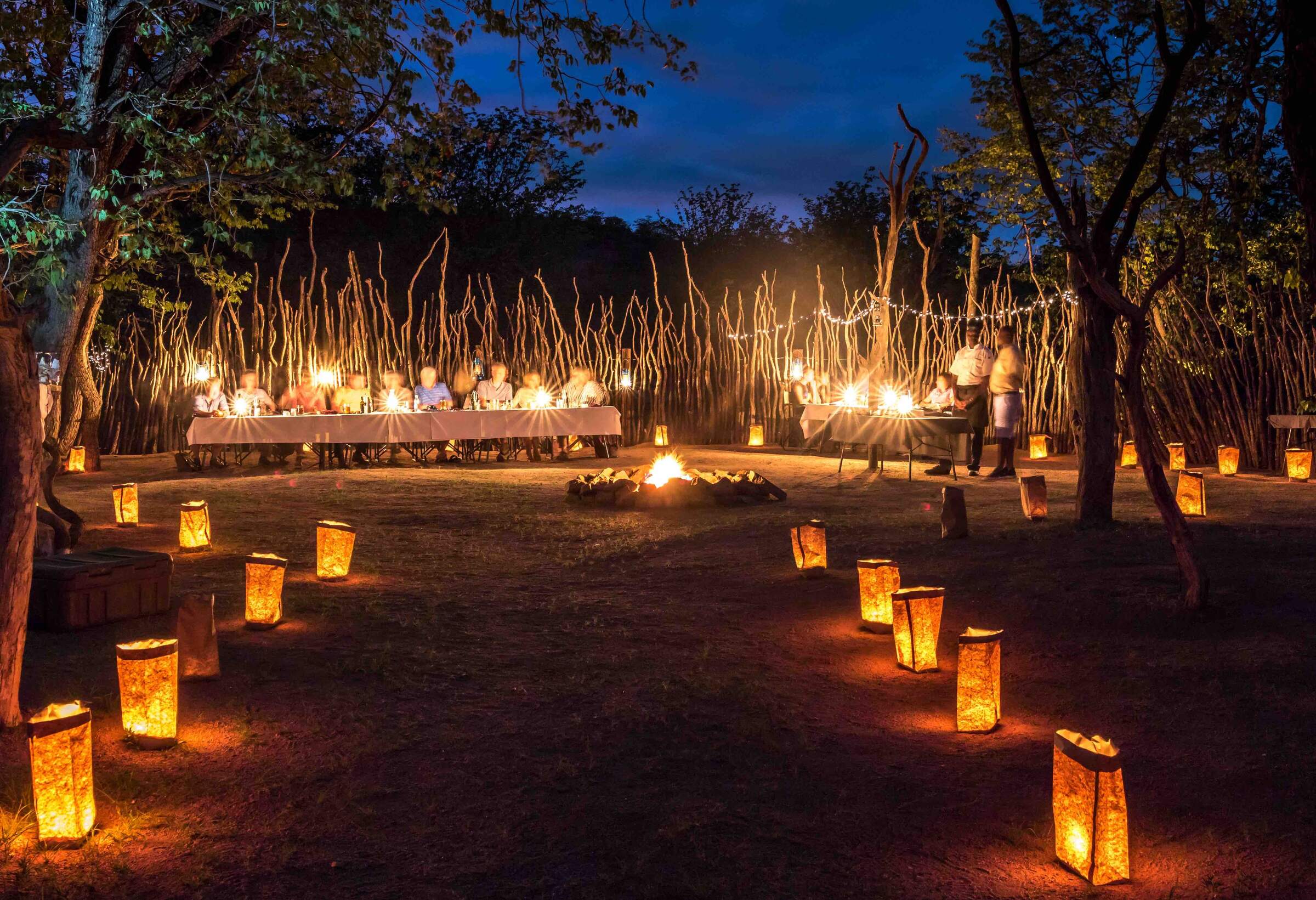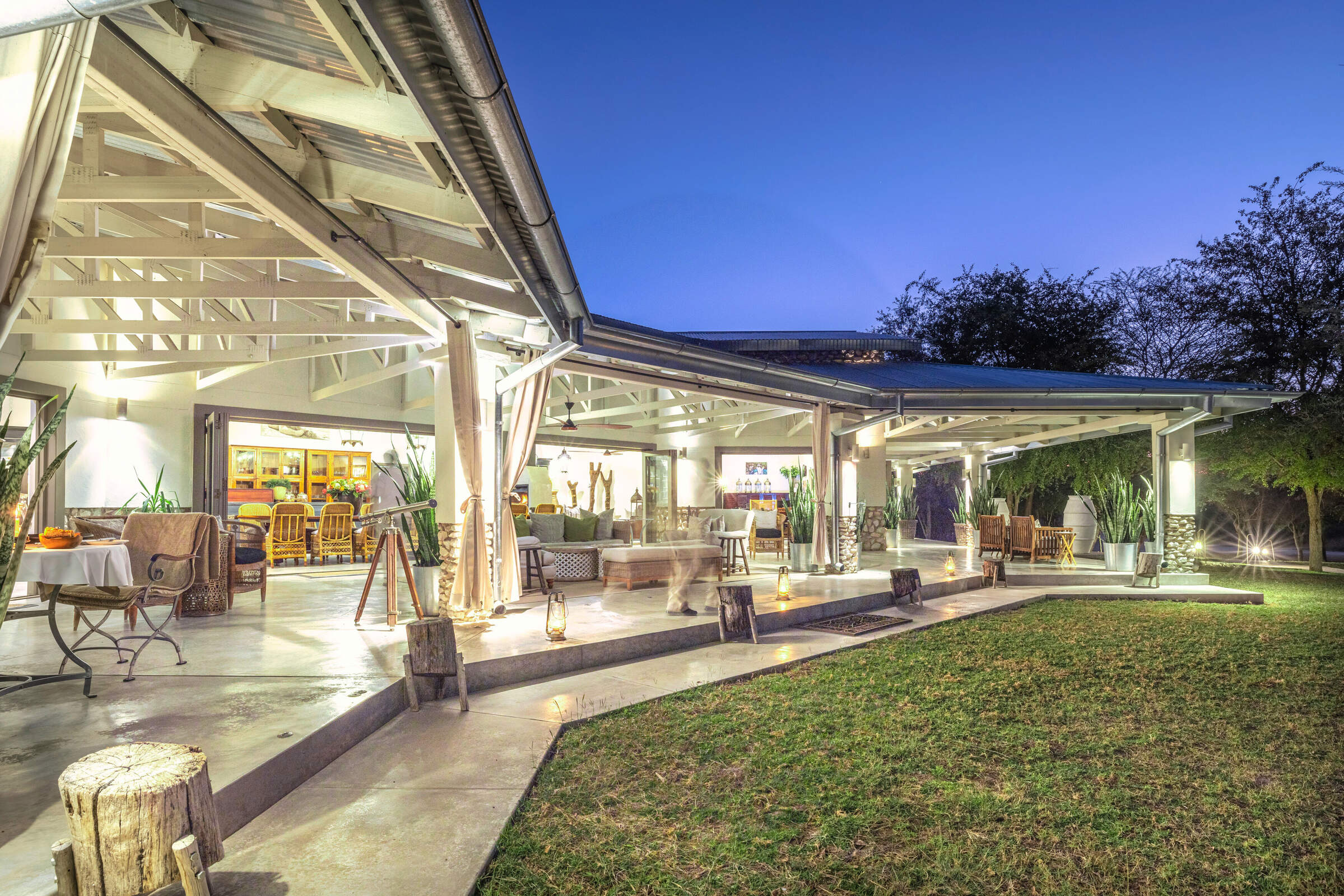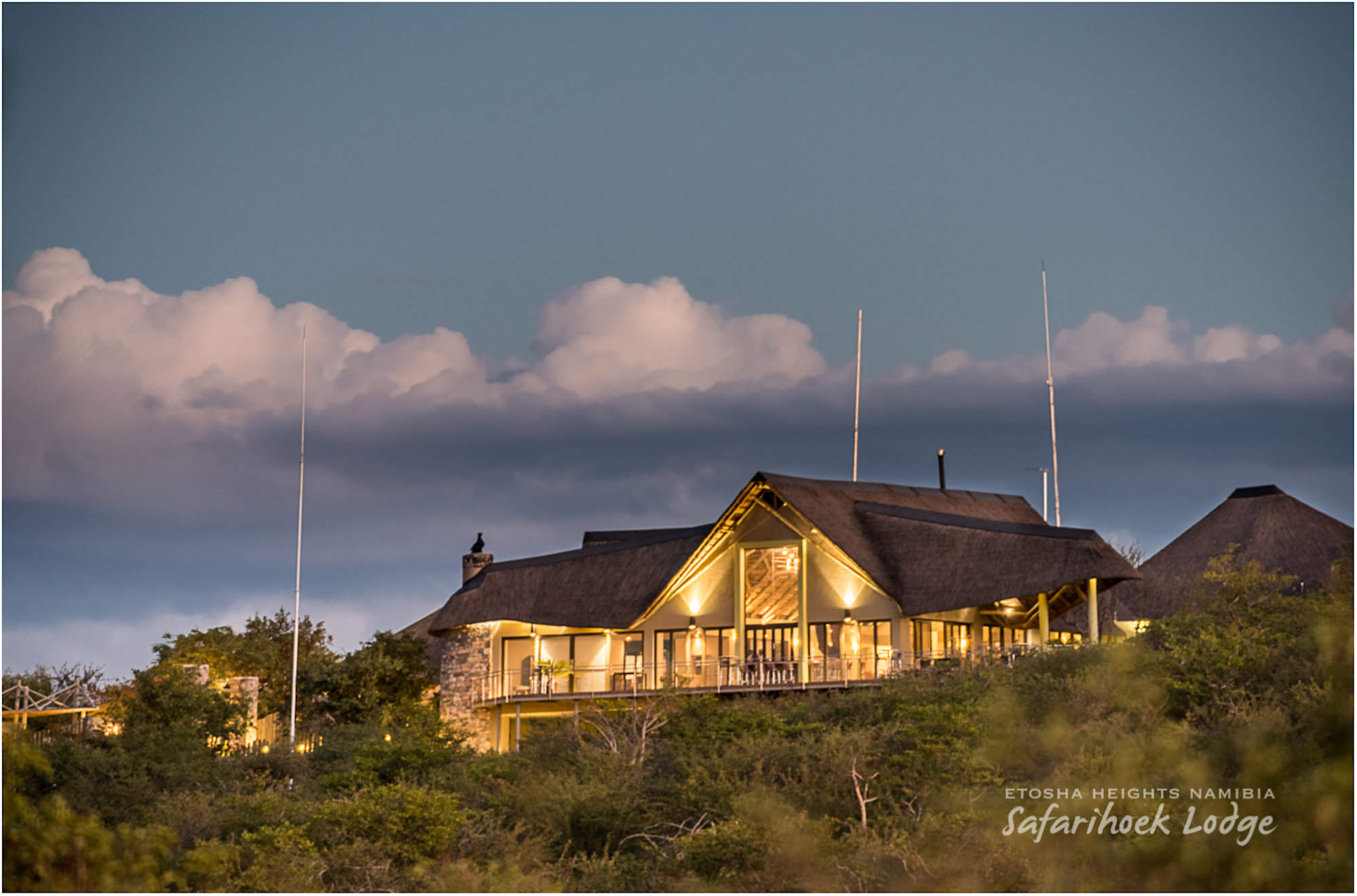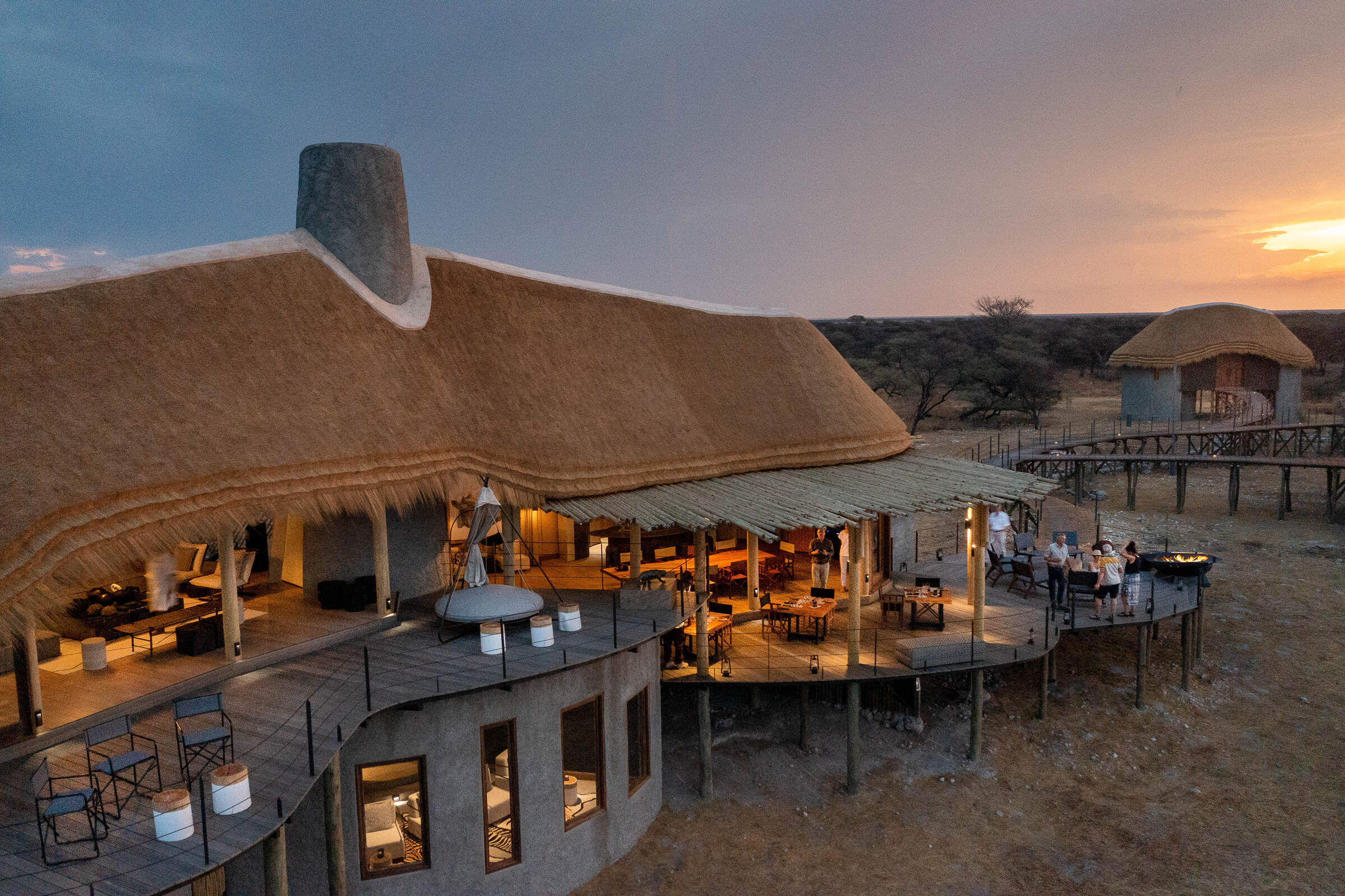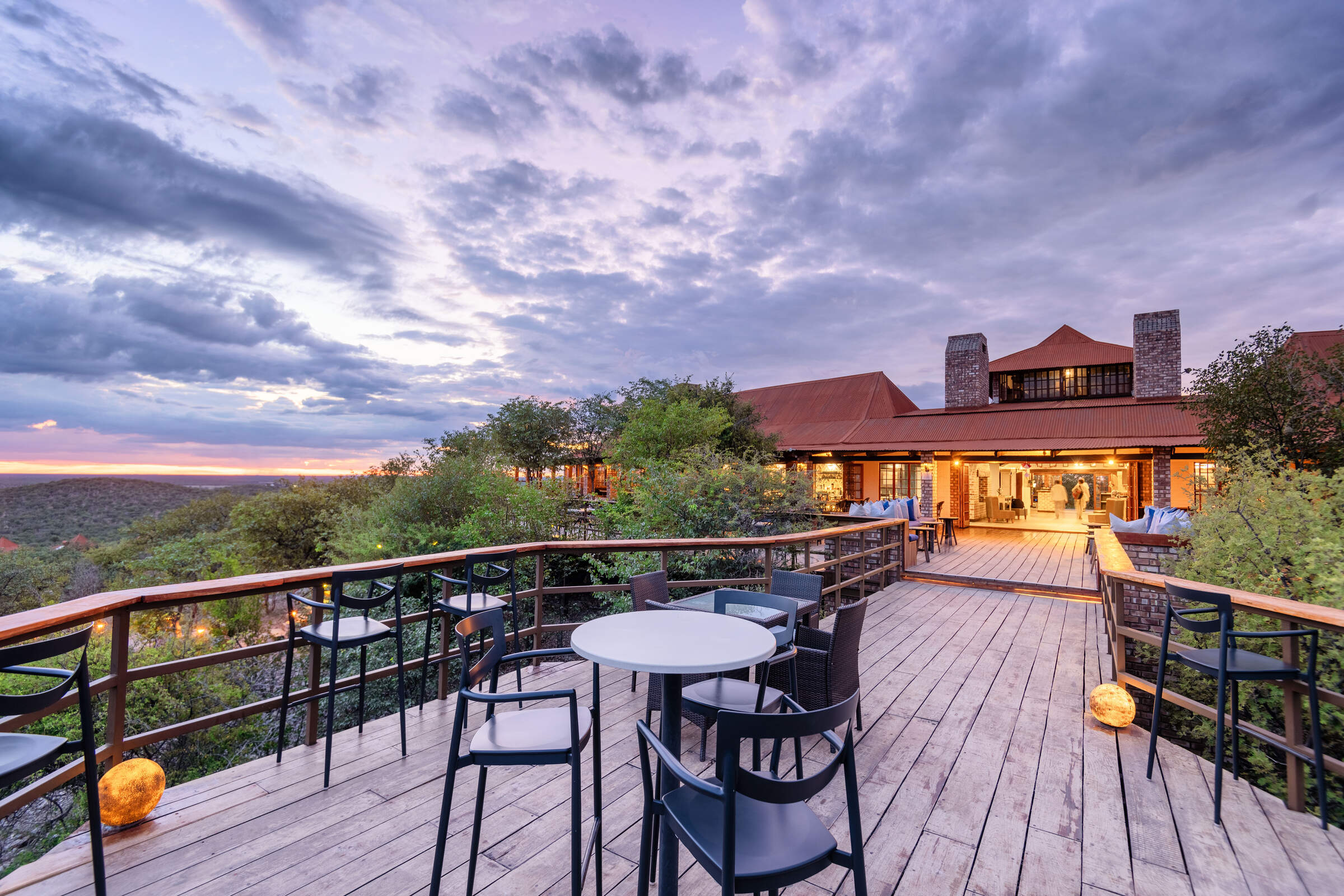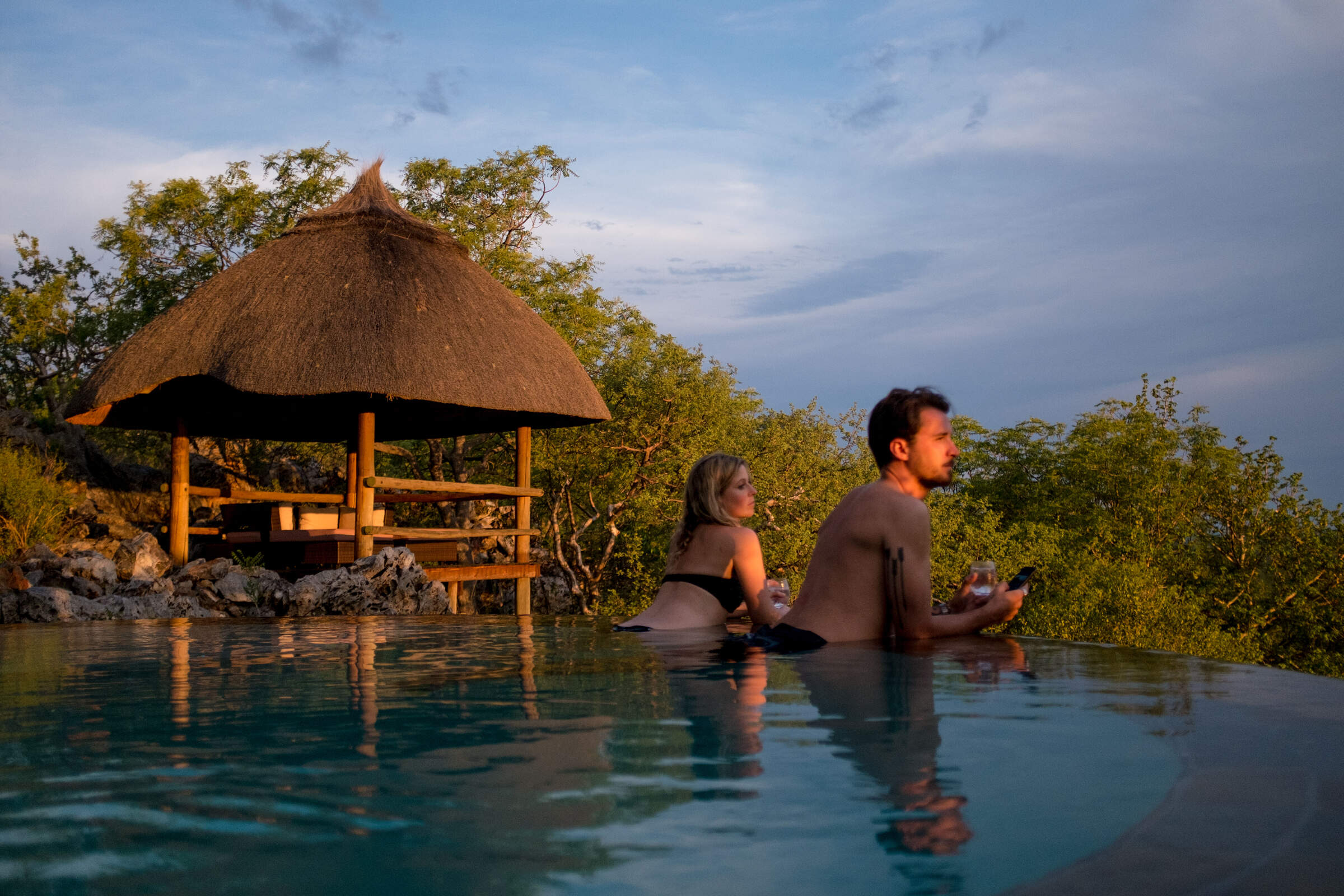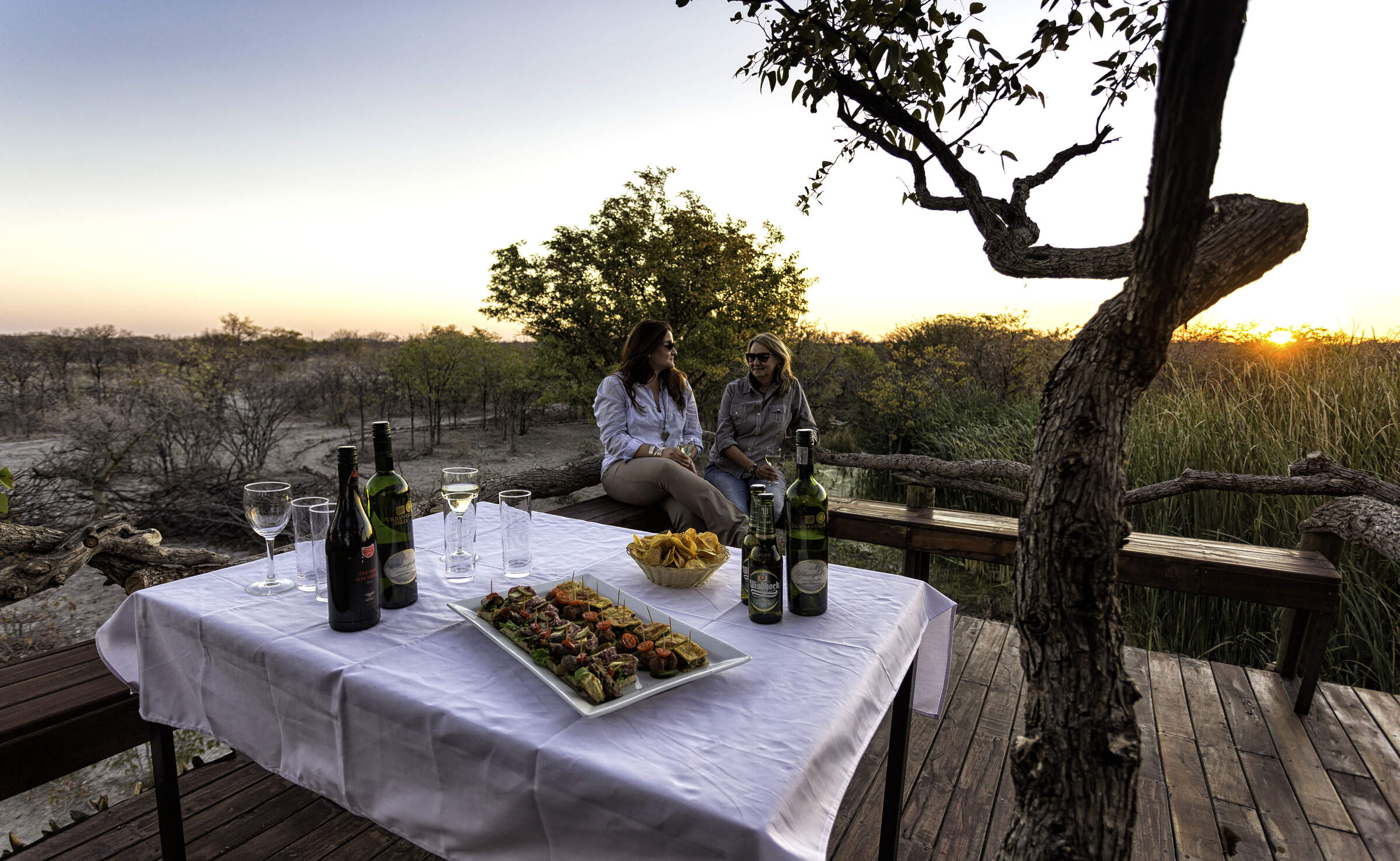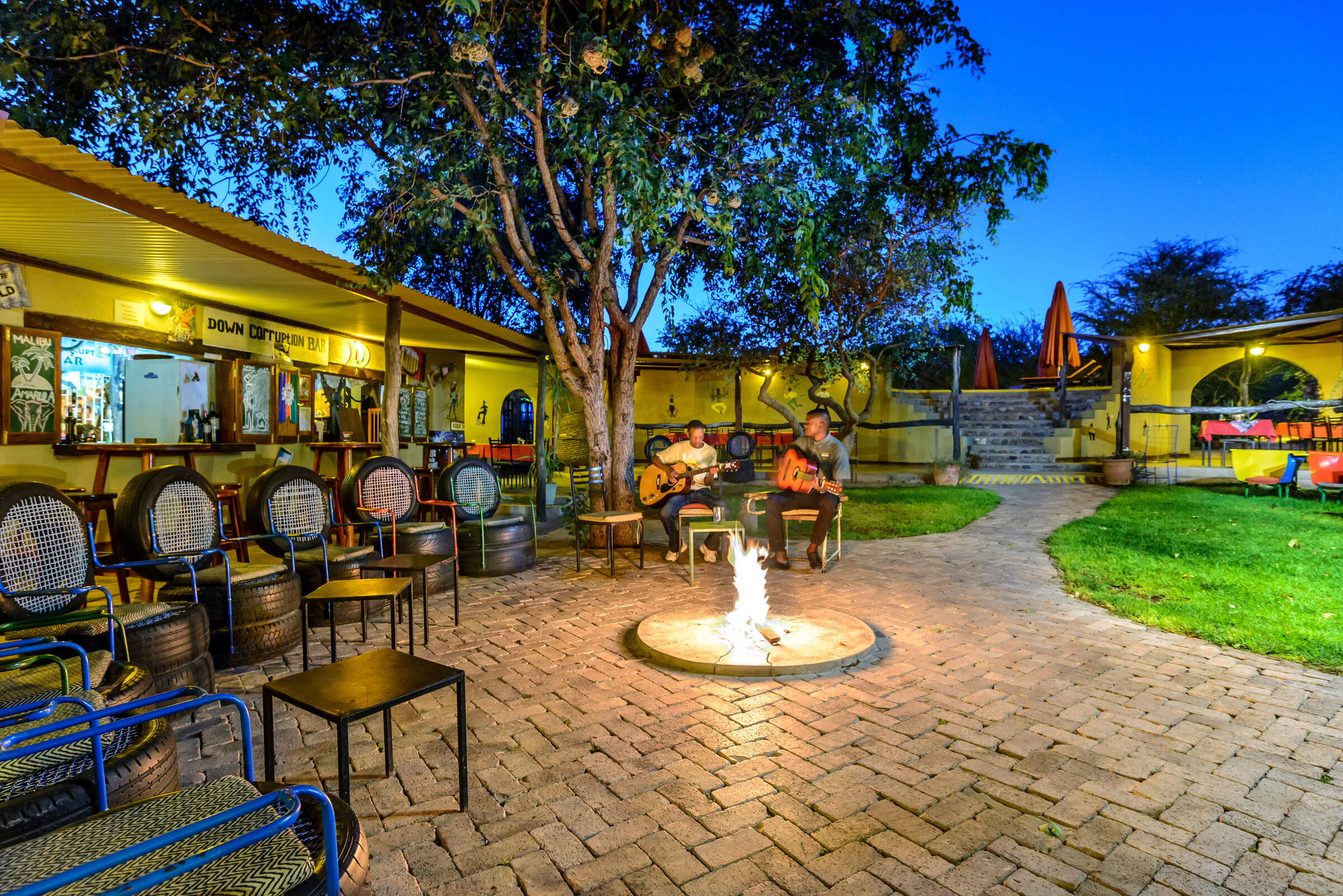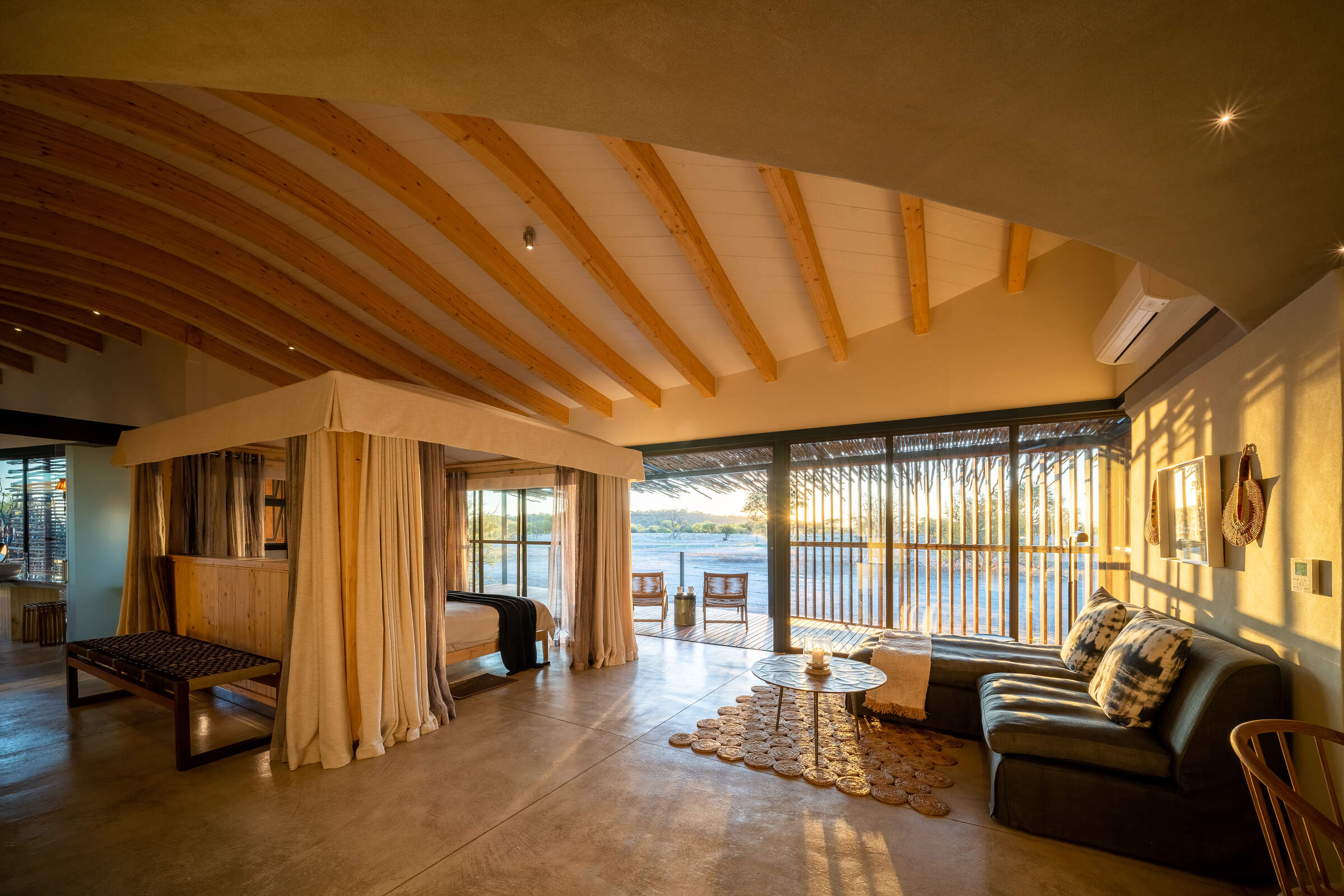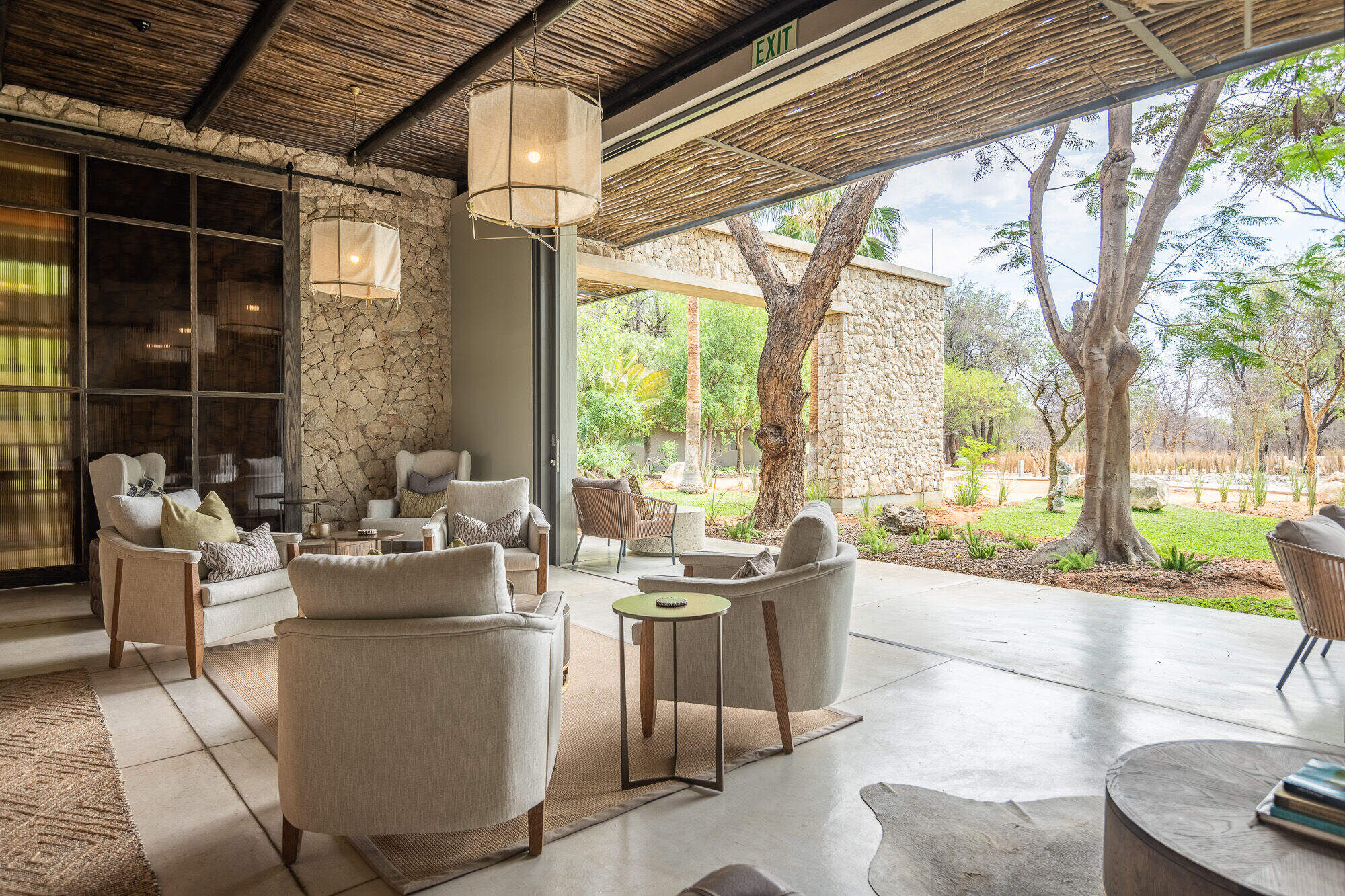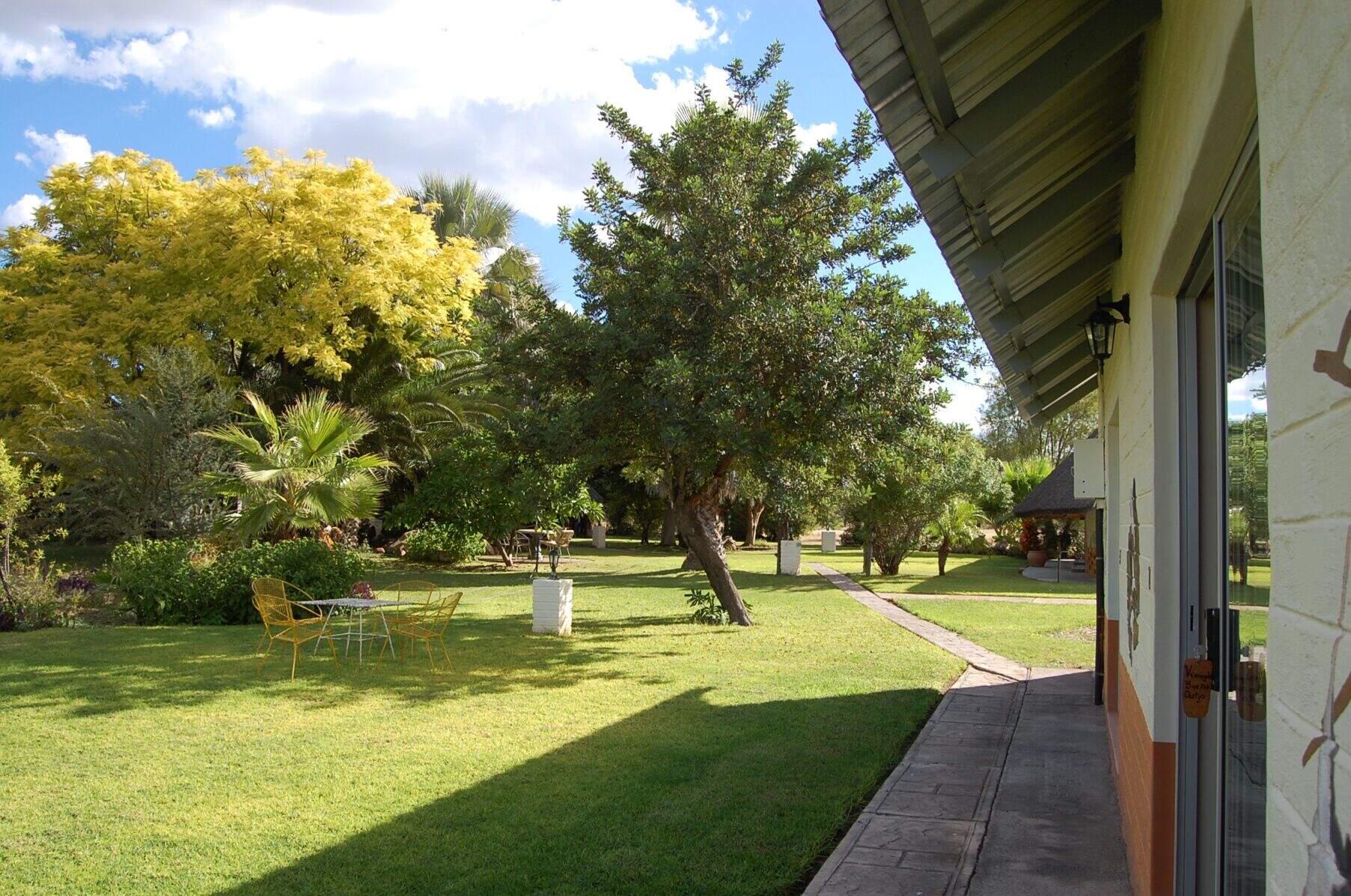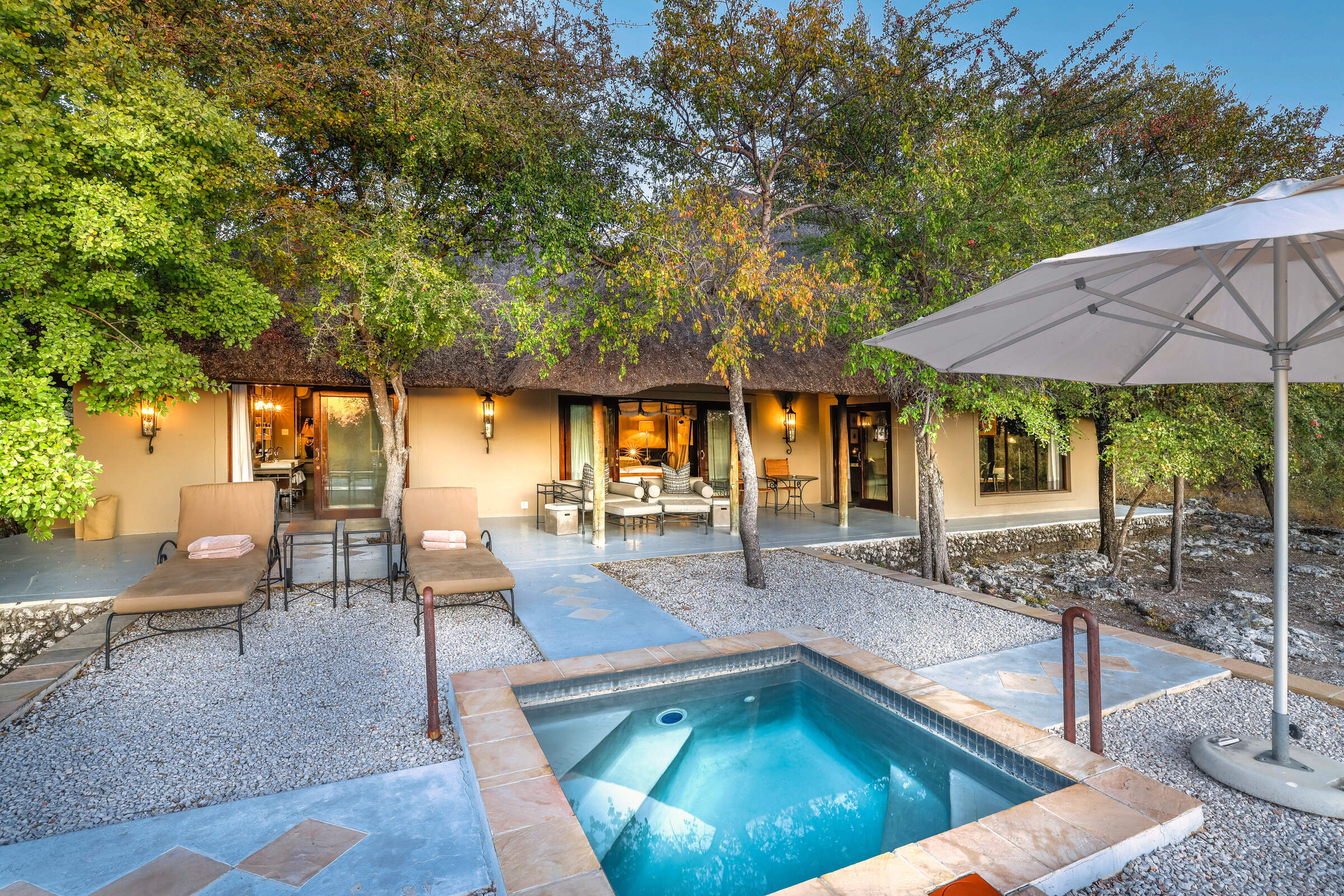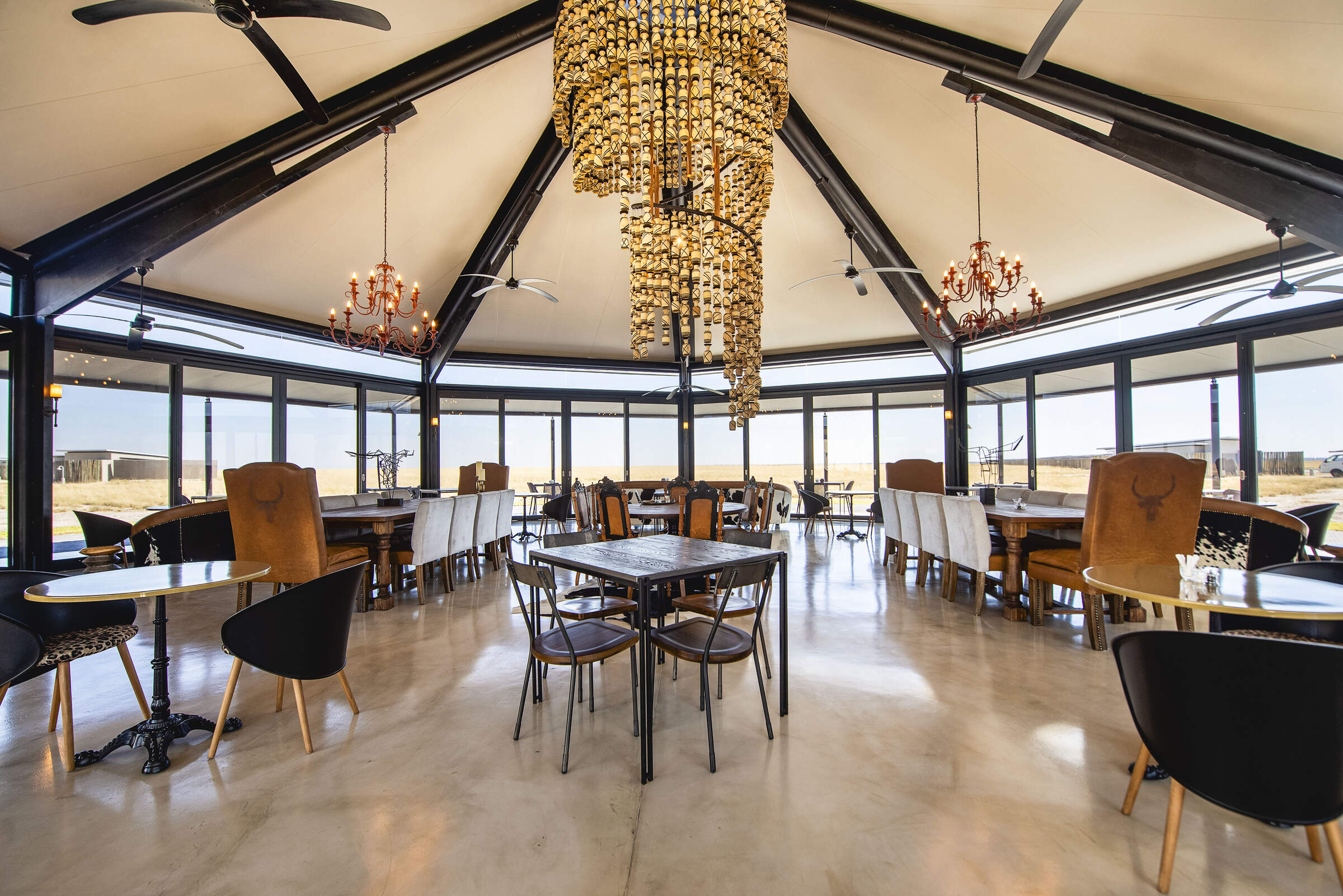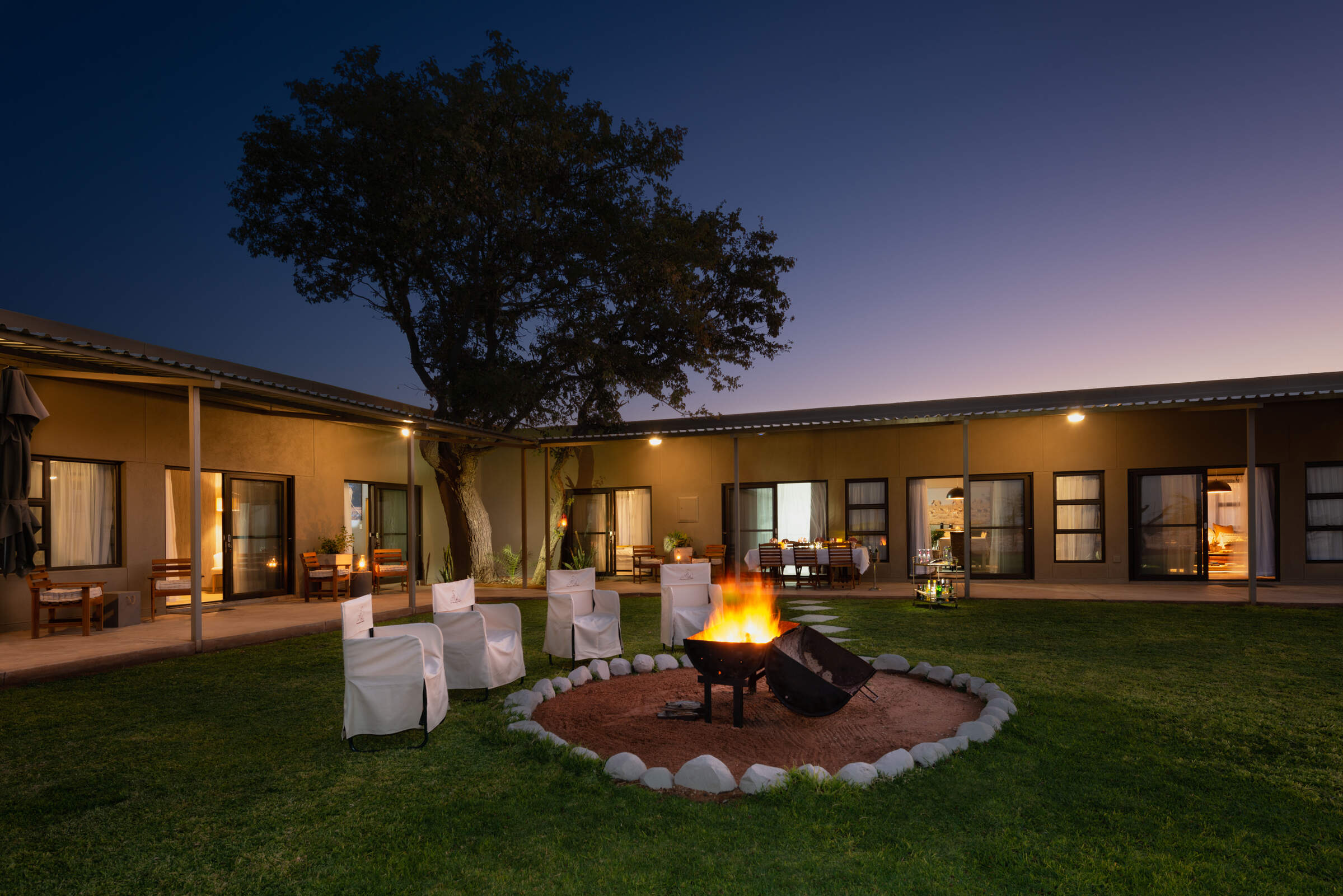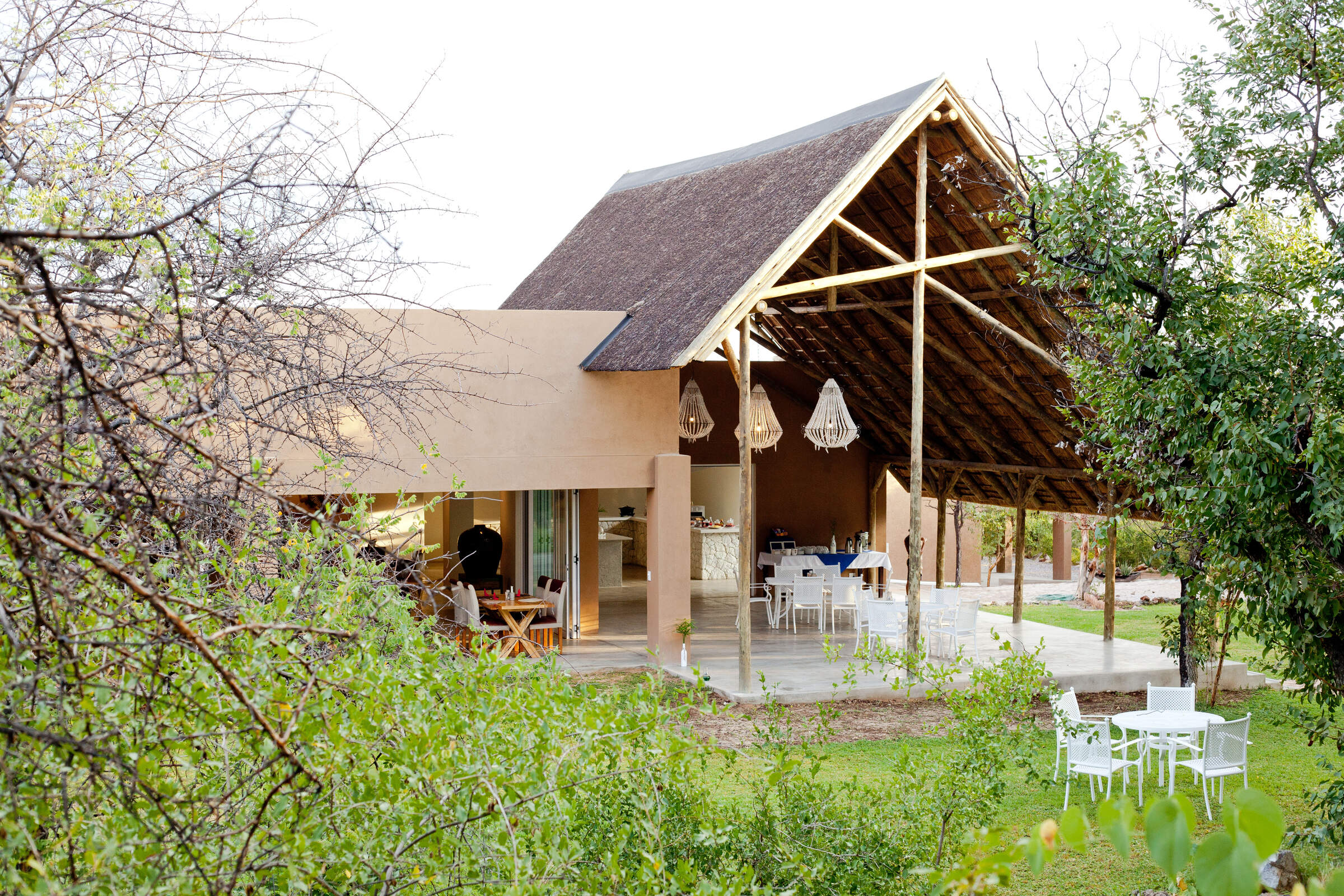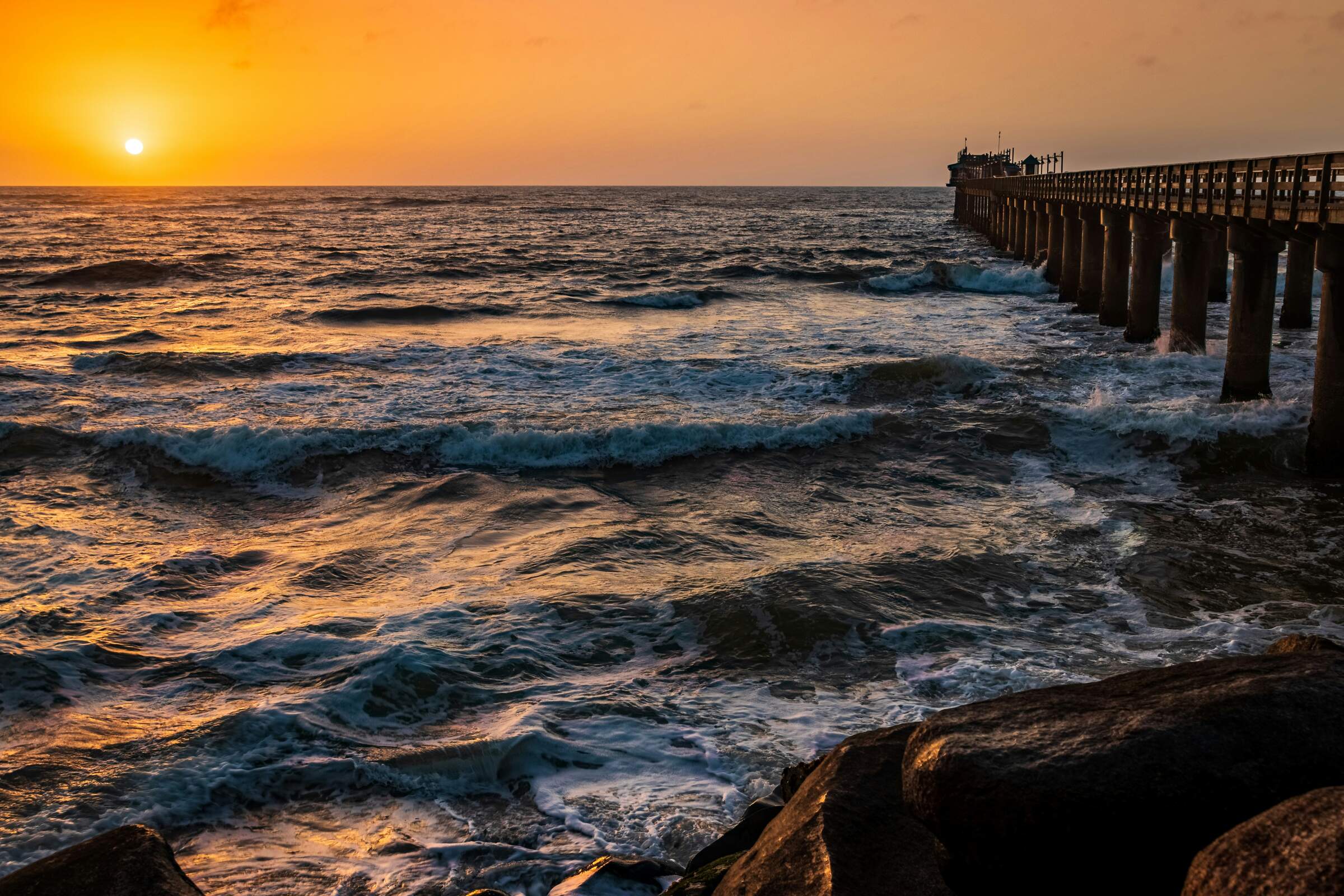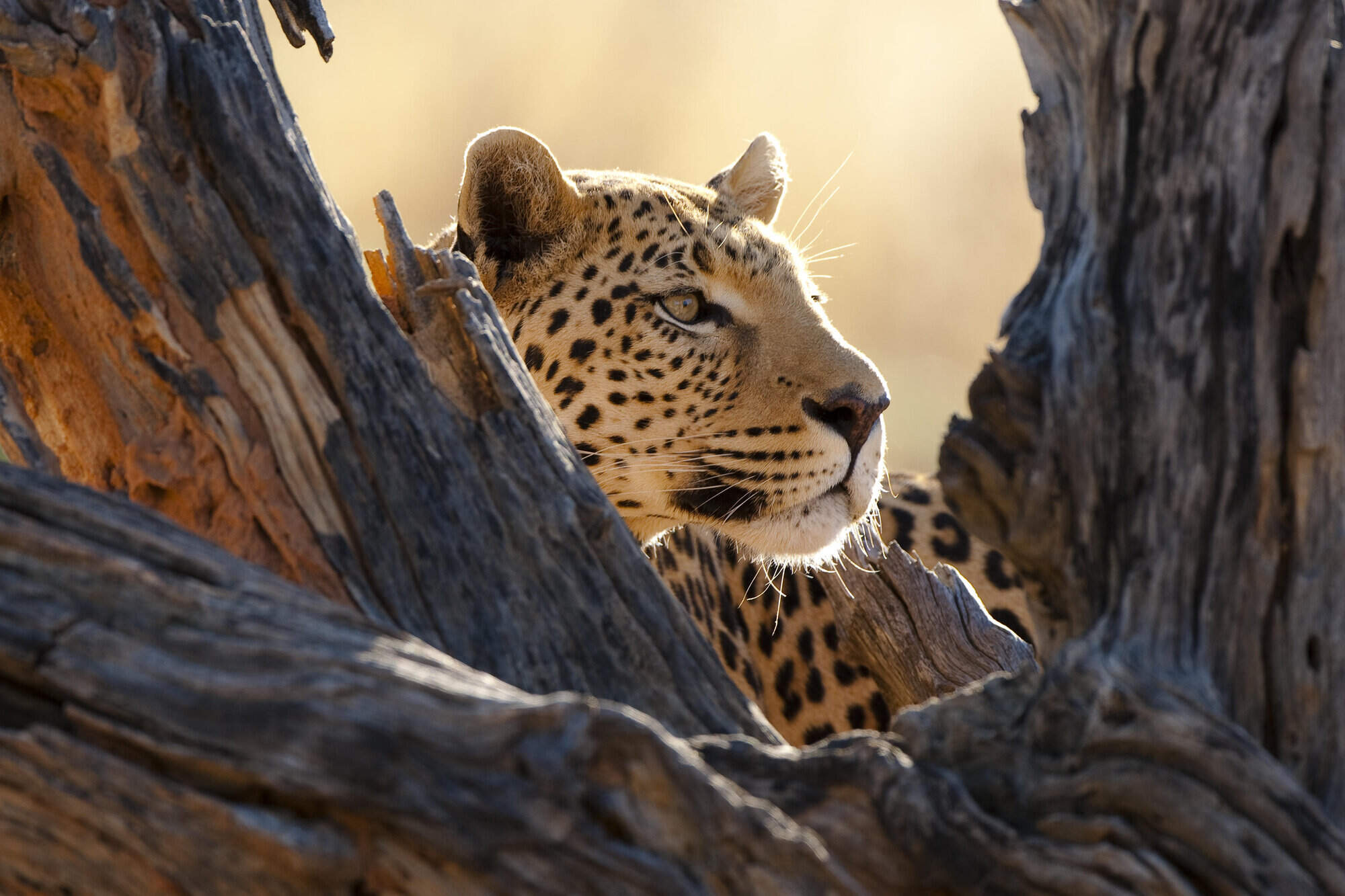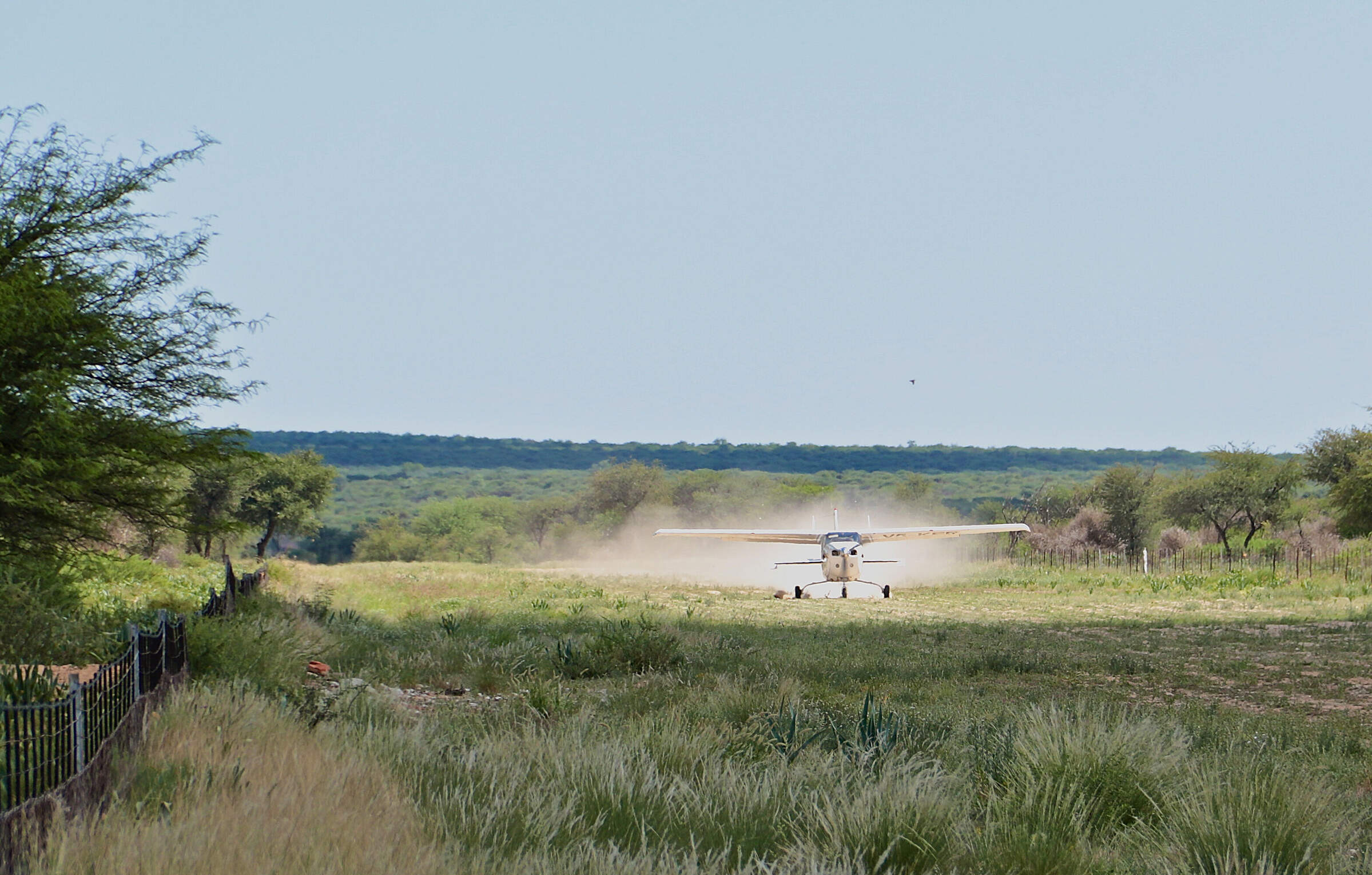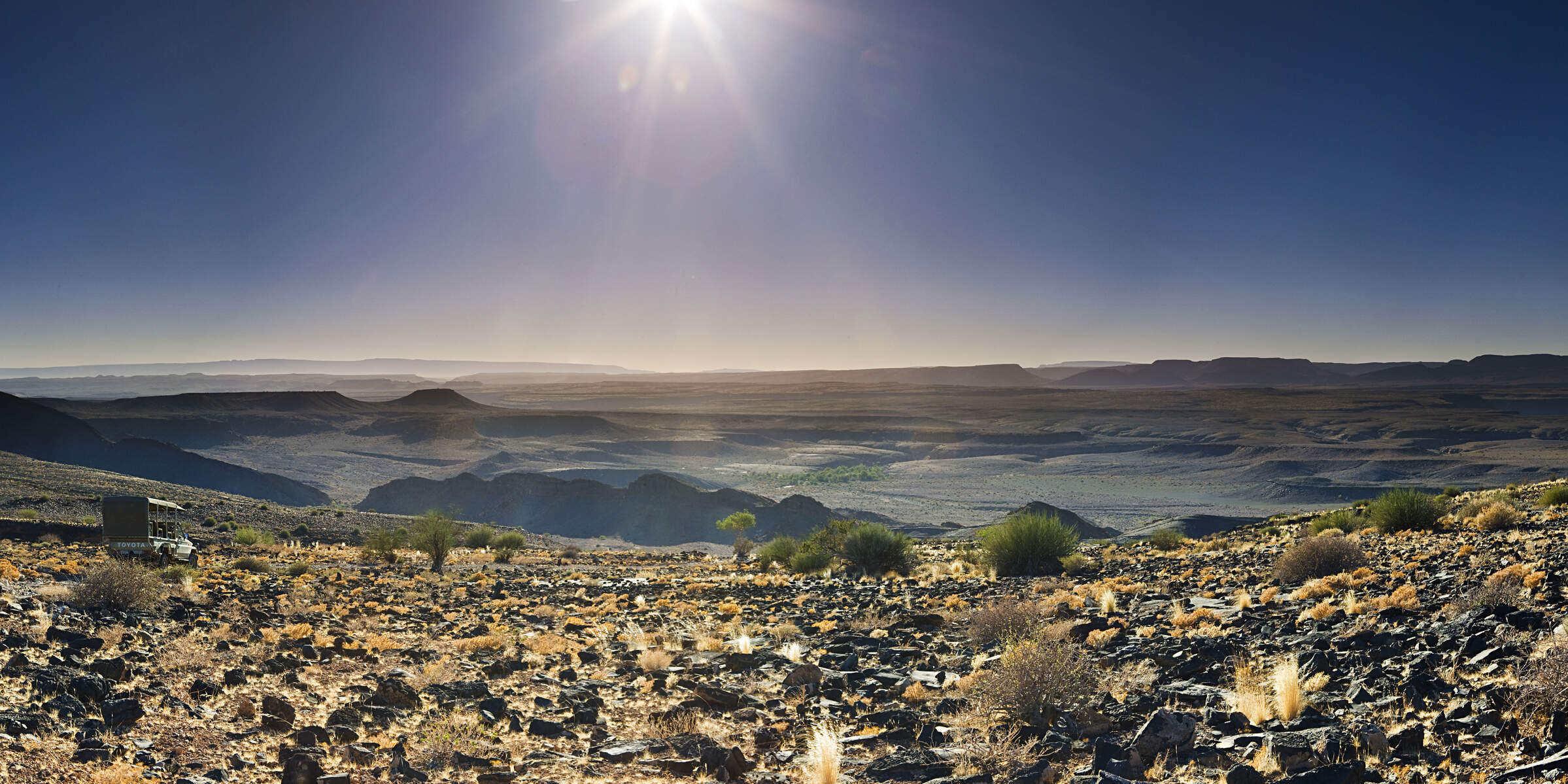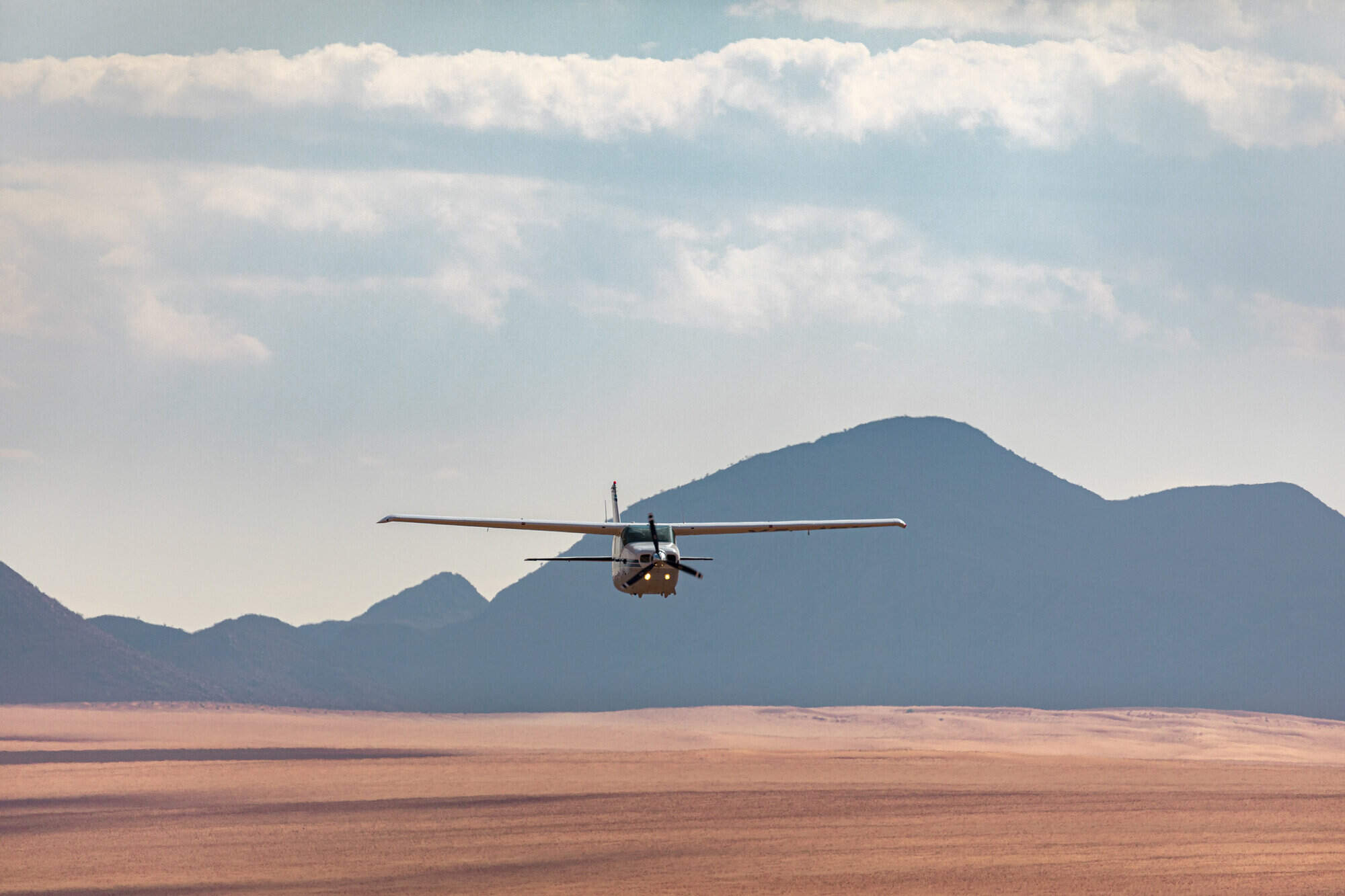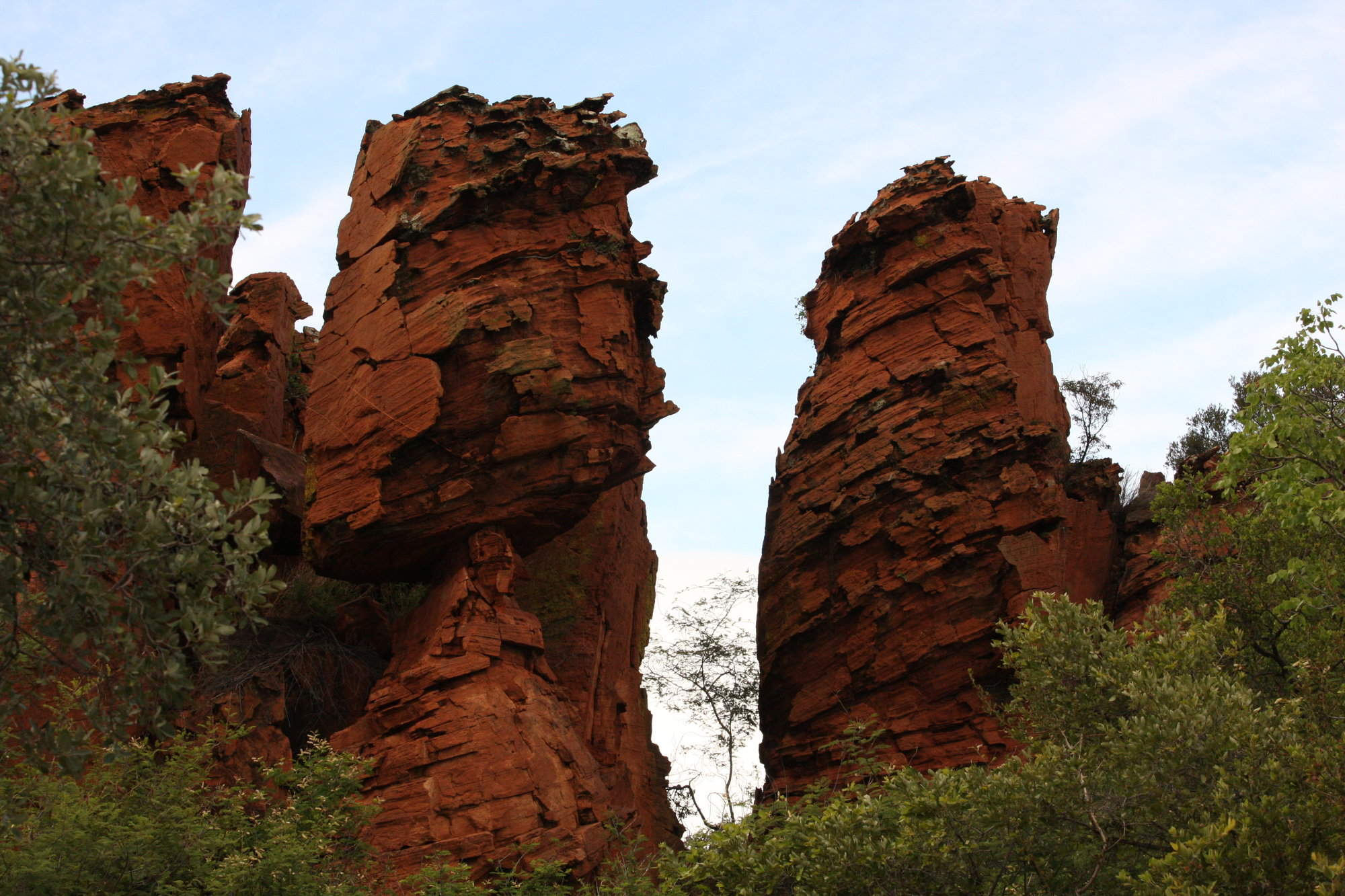Namutoni Camp: Our full report
Namutoni Camp stands on the eastern side of Etosha National Park, close to the von Lindequist Gate and the ...
... picturesque Fischer's Pan. Here, great concentrations of water birds and breeding colonies of flamingos can sometimes be seen during the rainy season. Namutoni itself also overlooks the small King Nehale waterhole, where game animals can be spotted occasionally.Namutoni is scattered around a white-washed old German fort, which gives the camp its unique character. Built in 1899, the fort was originally used as an outpost for German troops, and almost completely destroyed by 500 Owambo warriors in the battle of Namutoni, on 28 January 1904. It was rebuilt two years later, and after restoration works declared a National Monument in 1950.
Namutoni Restcamp (as it was originally known) officially opened for visitors in 1958, under the control of the Namibian government. In 1999, control of this and its sister restcamps in Etosha, Okaukuejo and Halali,,was passed to the para-statal organisation Namibia Wildlife Resorts (NWR), which refurbished the camp in 2007. This was a real step-change for the better in the camp's accommodation, and despite some reservations during a visit in 2014, we were pleasantly surprised by what we found on our most recent visit in March 2017.
The impressive and characterful fort at Namutoni is now barely used – apart from a small curio shop inside the courtyard – and it is no longer possible to walk up onto the ramparts. We can’t help but feel that this is a waste of such an iconic building, but the manager who walked us around Namutoni thought that the NWR were planning to build VIP rooms here – albeit probably a few years off.
Namutoni Camp boasts a total of 20 chalets and 24 rooms. All have en-suite bathrooms and outdoor showers, and are equipped with fridges and tea stations. Despite the lacklustre appearance of the main areas of the camp, all the accommodation was renovated in 2016 and looked smart when we visited. There are also camping pitches with plug points and communal ablution facilities.
- The 20 bush chalets – six doubles and 14 twins – are situated back to back in blocks of two, so that the front doors face in opposite directions. Inside, the rooms are elegant and spacious and they looked very clean. Neutral cream and dark brown tones dominate throughout and black-and-white wildlife photos hang on the walls. Framed seedpods and large cylindrical light shades made of natural materials add a stylish touch, while a writing desk and chair, and small wicker chairs and a table, complete the furniture.
Down a step is the en-suite bathroom, which has stone-effect tiles on the floor and walls. There are rectangular his and hers sinks, and a sunken bath that requires another step down in order to get in. There is also an inviting outdoor shower. At the front of the chalet is a private outdoor area, its gravel floor surrounded by wooden screens and set with two chairs. - The 24 double rooms are connected along concrete pathways (thankfully, NWR has removed the raised wooden walkways which we previously had concerns about). The rooms are in blocks of four and each has a small private seating area at the front.. They are slightly smaller than the bush chalets both inside and out, but otherwise are very similar.
For guests at Namutoni Camp, activities revolve around nature and wildlife. The King Nehale waterhole is floodlit at night and viewing benches provide opportunities to encounter some of Etosha’s shy, nocturnal game.
Most guests here drive themselves around the park during daylight hours, but the park authorities also run guided game drives, including night drives – which are not permitted by self-drivers. Drives set off at 5.30am, 3.00pm and 8.00pm, returning to camp about three hours later.
Our view
Although still a bit rough around the edges, the recently refurbished rooms at Namutoni appeared smart and functional. You may not experience the same level of personal service or overall quality of experience here as at some of the smaller, private lodges in the area, but the camp provides a good base to explore the eastern side of Etosha National Park.
Geographics
- Location
- Etosha National Park, Namibia
- Ideal length of stay
- 2–3 nights, often combined with visits to its sister camps, Okaukuejo and Halali
- Directions
- Namutoni is the most easterly of the NWR’s three erstwhile restcamps in Etosha. It is usually accessed via the von Lindequist Gate, from where it’s about a 12km drive.
- Accessible by
- Self-drive
Food & drink
- Usual board basis
- Bed & Breakfast
- Food quality
- Although we did not eat at Namutoni on our most recent visit in March 2017, we did glance at the restaurant menu .
There is a breakfast buffet serving both hot and cold items.
Lunch is an à la carte menu with options of soup, game salad, lamb chops and toasted sandwiches, with fruit salad or ice cream for dessert.
Depending on how many people are staying at the camp, dinner will be either a buffet or à la carte. Options include salmon, game steak, kingklip, pork chop and a vegetable dish, followed by cake or mousse for dessert. - Dining style
- Individual Tables
- Dining locations
- Indoor and Outdoor Dining
- Further dining info, including room service
- No
- Drinks included
- No drinks are included. The water can not be drunk as it is too salty but bottled water is available to buy.
Special interests
- Wildlife safaris
- Overlooks the flood-lit King Nehale waterhole, Namutoni gives visitors the opportunity to observe animals and birds at close range. The camp's main attracting are self-drive forays around the park. The Fisher's Pan nearby is often used as the breeding site for flamingoes.
- See ideas for Wildlife safaris in Namibia
Children
- Attitude towards children
- Children are welcome at Namutoni Camp.
- Property’s age restrictions
- There are no age restrictions at Namutoni Camp.
- Special activities & services
- Children must be over six to participate in game drives with the camp.
- Generally recommended for children
- The flexibility of a self-drive trip often suits families very well, though as there is not a lot to keep children occupied at the camp, we do not think that it would suit very young children.
- Notes
- Note that dangerous animals do sometimes enter the camp area, and the pool is unfenced, so care needs to be taken and parents must always supervise their children closely.
Our travellers’ wildlife sightings from Namutoni Camp
Since mid-2018, many of our travellers who stayed at Namutoni Camp have kindly recorded their wildlife sightings and shared them with us. The results are below. Click an animal to see more, and here to see more on our methodology.

100% success

100% success

100% success

100% success

94% success

73% success

64% success

62% success

55% success

50% success

31% success

15% success

14% success

0% success

0% success

0% success

0% success
Communications
- Power supply notes
- There is a back-up generator, although during our visit in March 2017, which was in the rainy season, this was not kicking in when the mains electricity went off.
- Communications
- There are no telephones but there is internet access around the pool and restaurant area. Vouchers for this WiFi must be purchased from the reception or the restaurant.
- TV & radio
- There are no radios or TVs.
- Water supply
- Mains
Health & safety
- Malarial protection recommended
- Yes
- Medical care
- There is a first-aid kit at Namutoni and some of the staff are first-aid trained. The nearest doctor is in Tsumeb, about 115km away.
- Dangerous animals
- Moderate Risk
- Security measures
- There's a low stone wall between the waterhole and the chalets, to reduce the chances of dangerous animals entering the camp and security guards are also present at the camp.
- Fire safety
- All rooms have fire extinguishers.
Activities
4WD Safari
Birdwatching
Night drive
Private activities
Extras
- Disabled access
- Not Possible
- Laundry facilities
- A laundry service is available for an extra charge.
- Money
- No currency exchange is available.
- Accepted payment on location
- Visa cards are accepted, but we would recommend using cash (in Namibian dollars or South African rand) because the process of using a credit card can be rather slow.
Other lodges in Etosha National Park
Alternative places to stay in this same area.






